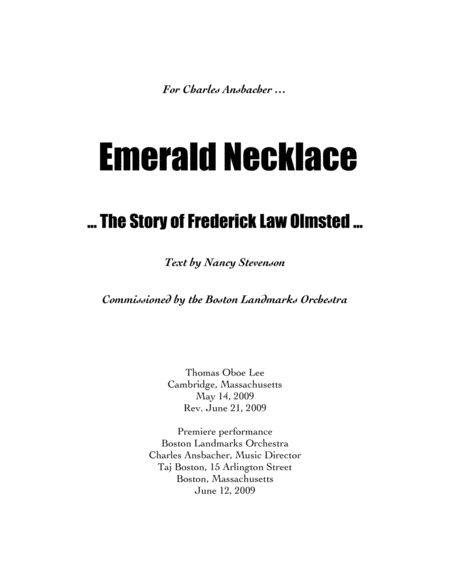Large Ensemble Voice - Digital Download SKU: A0.869339 Composed by Thomas Oboe Lee. 20th Century,Baroque,Classical,Contemporary,Romantic Period. Score and parts. With Pluto ââ¬Â¦ The Lord of the Underworld. (2005) This year, 2009, he asked me if I would be interested in writing a work for narrator and chamber orchestra like Prokofievââ¬â¢s ââ¬ÅPeter and the Wolf.ââ¬Â I said, ââ¬ÅYes. I would be delighted to do so.ââ¬Â He. 90 pages. Thomas Oboe Lee #32449. Published by Thomas Oboe Lee (A0.869339). Program note. Maestro Charles Ansbacher has been a devoted supporter of my work for many years. In the past 6 years he has commissioned me to write two works for his ensemble, the Boston Landmarks Orchestra: 1) Mambo!!! (2003) 2) Pluto ⦠The Lord of the Underworld (2005) This year, 2009, he asked me if I would be interested in writing a work for narrator and chamber orchestra like Prokofievâs Peter and the Wolf. I said, Yes. I would be delighted to do so. He told me that the subject for this work would be Bostonâs own landscape architect, Frederick Law Olmsted. Sure, I said, why not? Charles told me he had a poet in mind who would provide the text, Nancy Stevenson. I said, Great! The work is in four parts, following Ms. Stevensonâs poetic design. I wrote a marching music in Part One depicting Mr. Olmsted when as a child he walked from his home to his aunts and uncles who lived far away. As a young man, Mr. Olmsted went through many jobs until he decided that as a landscape architect he could make cities a better place for children and adults alike. The mayor of Boston hired him to do just that, to make Boston more livable. In Part Two, I wrote presto music depicting the dredging of the Charles River and the planting of trees along its shores. In Part Three, the text describes the Boston Emerald Necklace â the paths that lead from the Fens to the Arboretum to Franklin Park. For this section I chose music that is bucolic and pastoral, a setting that evokes the country side with a flock of sheep, complete with a shepherd and his dog. In the last section the text describes Mr. Olmstedâs dream that in his parks there would be tranquility and rest to the mind ⦠a place where the rich and the poor would play together. The music returns to the legato march that began the work.
